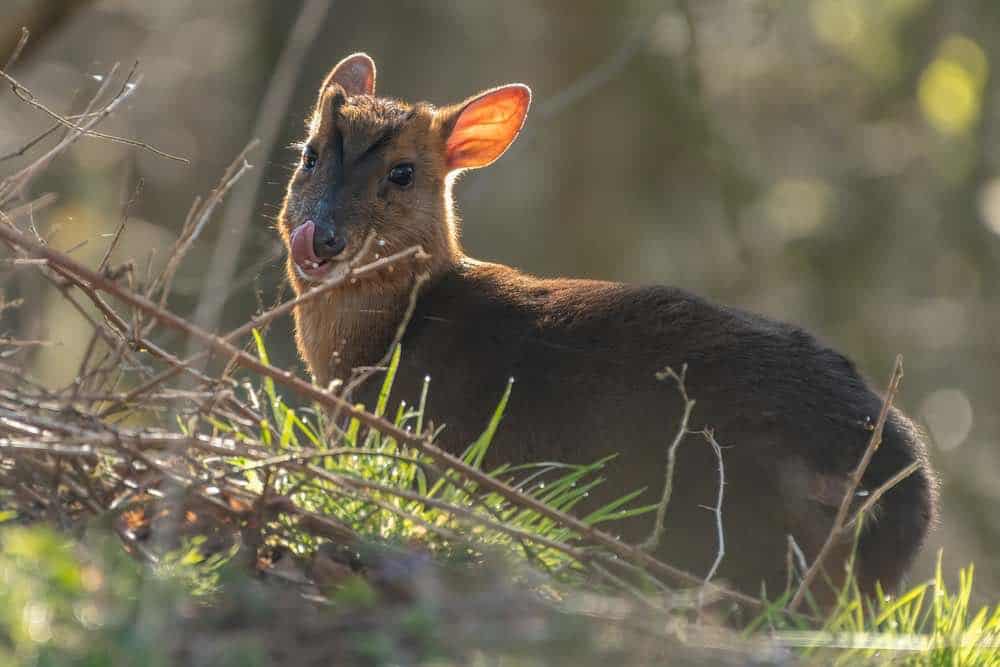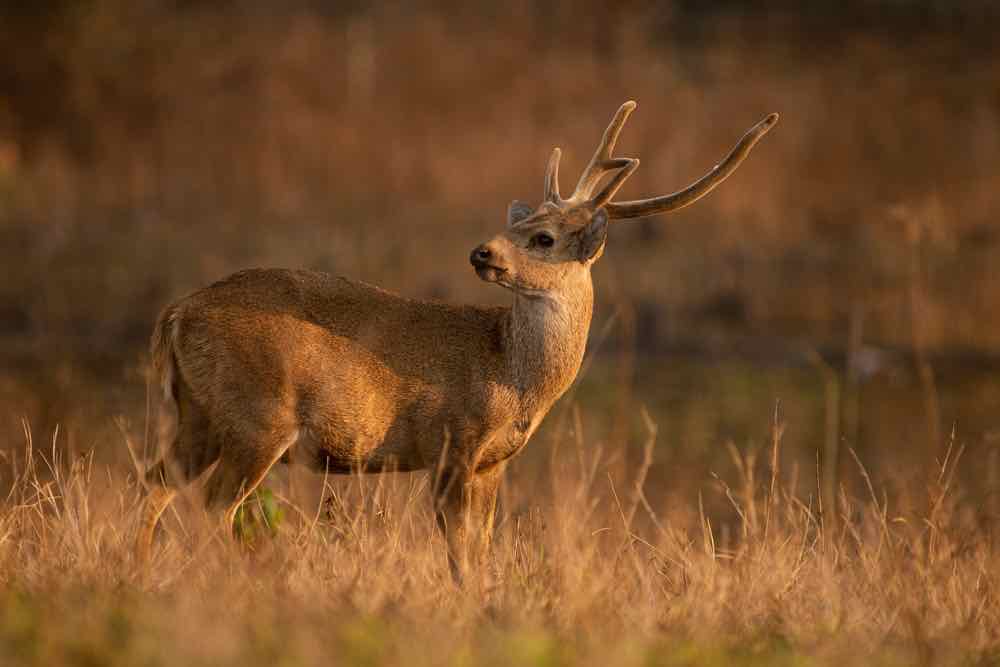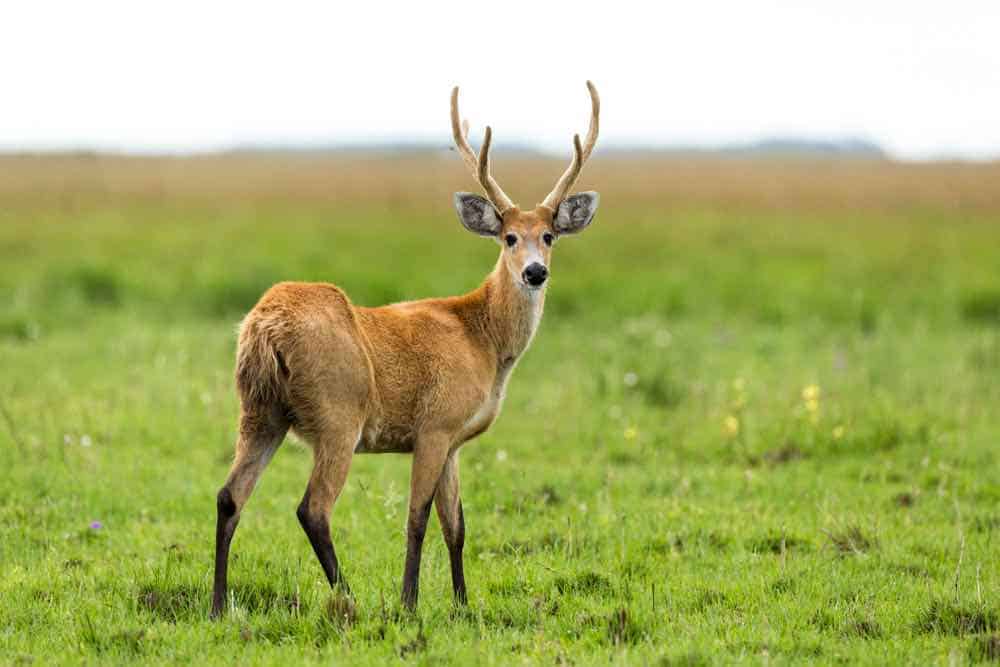There are more than forty deer species worldwide, including more than twenty in North and South America. The South Andean deer is one of these many species that roam the Americas. This deer has the sure-footedness of a mountain goat combined with the looks of a white-tailed deer. It is also one of the rarest deer species in the Southern Hemisphere.
Read on if you’re curious and want to know more about this incredible animal!
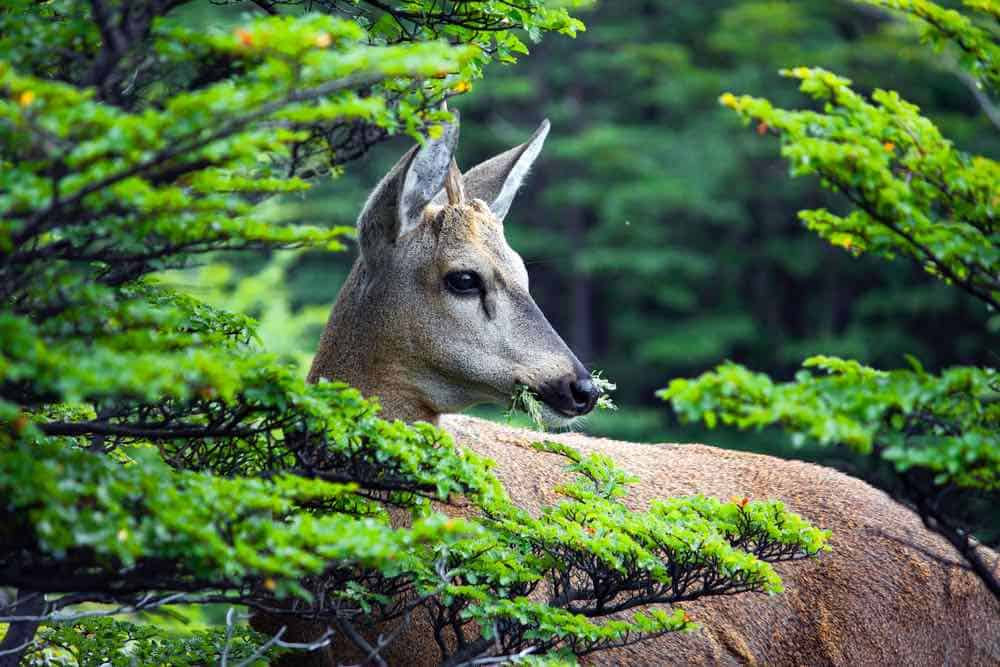
What is a South Andean Deer, and Where Did It Come From?
The South Andean deer, which also goes by the name of southern guemal and Chilean huemal, is a deer native to Chile and Argentina. It’s best known for its prowess in the Andes mountains and for being one of South America’s most endangered deer species.
General History
Unfortunately, very little is known about the history of this deer species. It first started getting studied in the 1960s and 1970s, but its history no doubt goes back much further. It’s historic and vital enough to be a part of the national coat of arms for Chile and is also a National Natural Monument for the country.
While little is known about the overall history of the deer, it’s an essential part of Chile and Argentina.
Size
The South Andean Deer is one of only two medium-sized deer in South America. Here are some of its physical specs.
- Roughly 55″ to 62″ is the length of the body from front to back
- 29″ to 33″ is the height to the shoulder of the deer when it’s standing
- Its tail is between 4″ to 6″ long
- Can range from 100 to 150 pounds
Unique Features
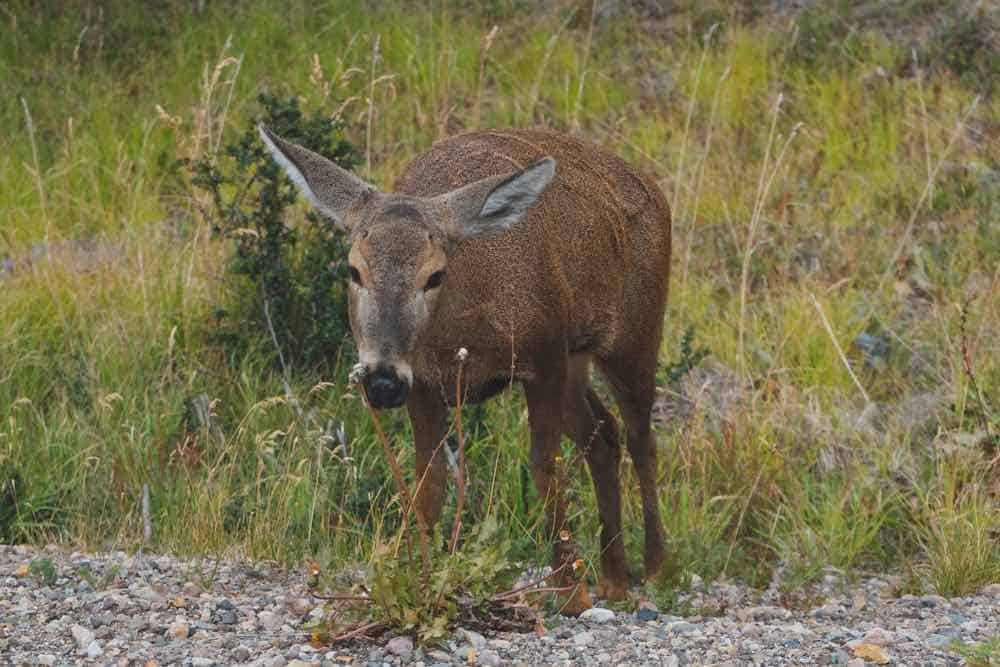
While the South Andean deer’s body, shape, size, and color are very similar to the American white-tailed deer, there are a few differences. Rather than the traditional antlers that most deer species have, the South Andean has individual tines or horns. Depending on their age and size, a South Andean deer will have one horn on either side of its head or two horns on either side.
This deer is grayish-brown in color and has coarse, thick hair. While the deer’s torso is thick and wide, it’s as short as it is because of the short legs it possesses. Adding to its similarity to the white-tailed deer is the fact that the South Andean deer also has a short, brown tail with a white underside.
Difference Between Males and Females
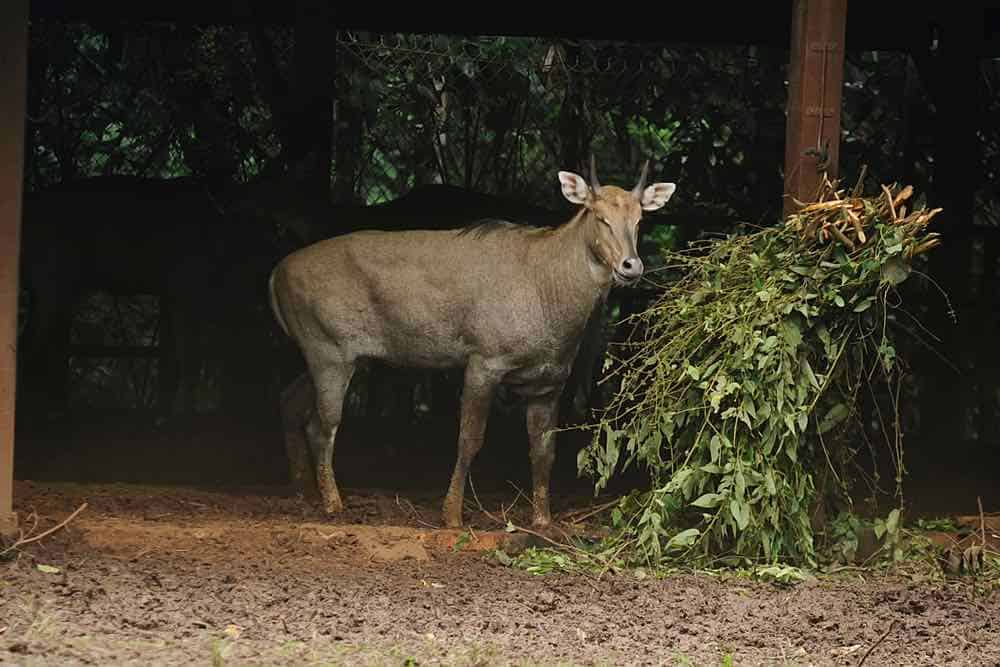
The main difference between male and female South Andean deer is that only the males can grow antlers or horns. However, they shed these towards the end of the season. The best way to tell the difference between females and males after they’ve shed their antlers is by the blackish face mask around the mouth of the males.
Diet
South Andean deer are herbivores that feed mainly on grass, leaves, and other plants. One of their favorite foods is the gunnera plant which grows large, palm-frond-like leaves. When necessary, however, these deer will feed on any herbaceous plants and grasses they can find.
Habitat
Thanks to its short, stocky, strong legs, the South Andean can roam pretty much wherever it wants to. It can handle the tricky, rocky terrain of the Andes mountains, but it also likes to roam around the bluffs, woods, and flatlands of Patagonia. In general, males prefer the lower grasslands, while females and fawns prefer the bluffs and rocky terrain.
While these are the preferred living areas for the deer, they tend to gravitate to the mountains in higher numbers during the summer. From there, they gradually make their way down to the low forests and grasslands during the winter. They typically start the long trek when fall hits so they can make it to the valley by the start of winter.
Reproduction
South Andean deer tend to live alone rather than in packs or herds. The only time they travel together is when a mother has fawns. Males live alone year-round except for during mating season when they seek out females.
The mating season typically takes place in the late fall months. When mating is complete, the female is pregnant for an average of 235 days before they give birth to a fawn.
Location in the Food Chain
As a herbivore, the South Andean deer is very low on the food chain. While it doesn’t feed on any other animals, it has one primary predator that hunts it – the cougar. Aside from the cougar, humans are the only other predatorial threat to the South Andean.
Where Can You Find South Andean Deer Today?
Historically, South Andean deer roamed freely and were very numerous in both Argentina and Chile. Nowadays, however, the deers’ number has greatly diminished in both countries. It’s currently estimated that there are around 400 deer in Argentina, while there are roughly 1,000 in Chile.
Your best bet of spotting a South Andean Deer is in one of the many protected areas in either Argentina or Chile.
Status of the South Andean Deer
Endangerment
In total, there are only an estimated 1,500 to 2,000 South Andean deer remaining in the world, making it one of the most endangered deer species. Cougars and other invasive species not native to South America have played a role in these diminished numbers. As such, the South Andean deer is listed as an endangered species.
Disease and Nature
In addition to predators, these deer have also been subjected to disease, famine, and forest fires.
Poaching
While animals and natural factors have helped turn the South Andean deer into an endangered species, hunters and poaching have played a bigger role. Even today, these deer are targeted for their meat, antlers, and fur. They’re also targeted because of a false belief that they are stealing food and crops from farmers and their livestock.
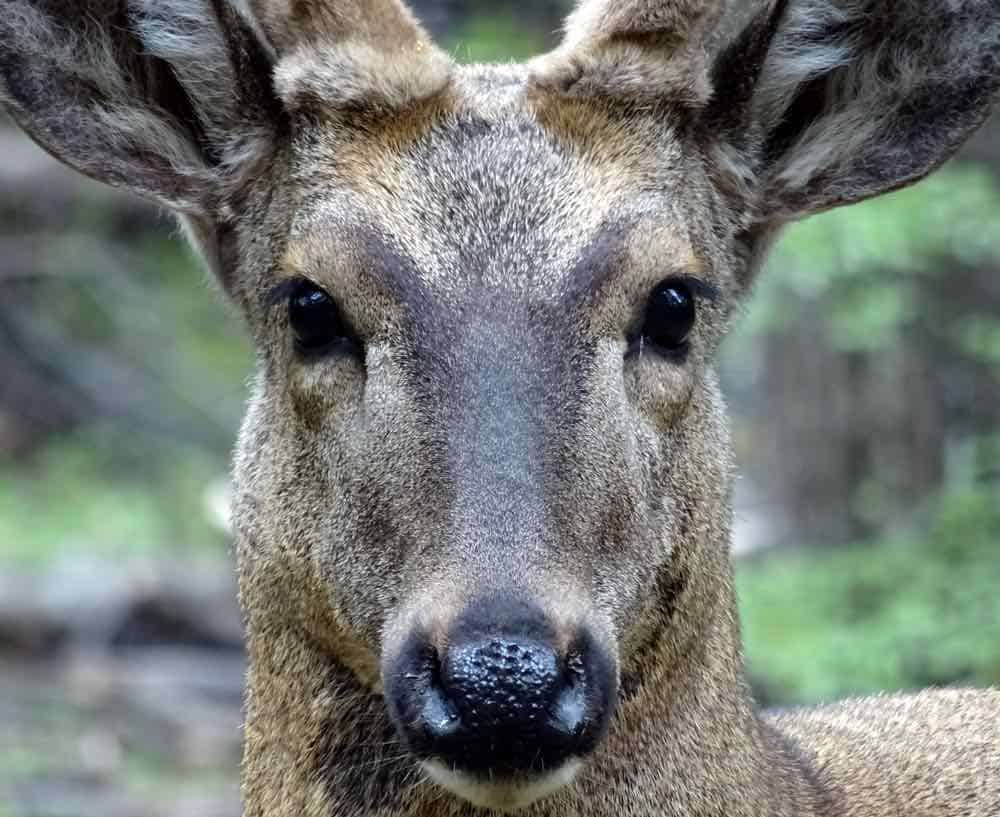
Final Thoughts on the South Andean Deer
In the past century, the South Andean deer has plummeted by 99% in terms of population. Adding to its difficult life is the fact that its habitat has been cut in half, which means it has less room to live, feed, and roam. With the odds stacked against this endangered species, it’s up to the people of Argentina and Chile to make sure this noble deer doesn’t go completely extinct.
If you want to learn more about other types of deer, check our Deer Resources page.

